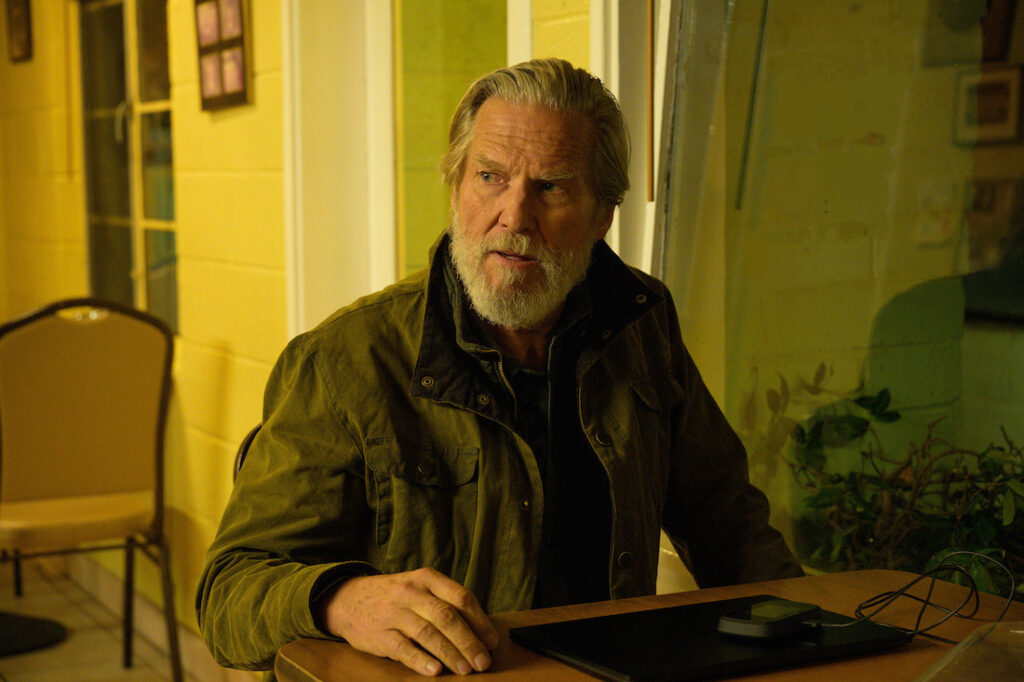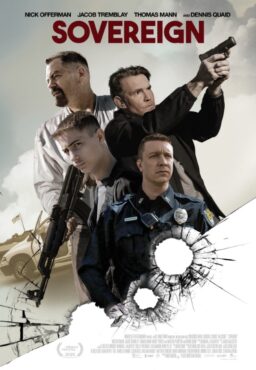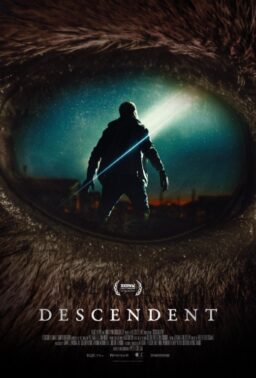Becoming a well-trained, wise assassin is a popular look for the aging movie star, and in its most successful cases, it has helped redefine how we see different actors. It’s been custom-tailored for the likes of Liam Neeson, Denzel Washington, Tom Cruise, Bob Odenkirk, Sean Penn, and now, Jeff Bridges. Bridges continues to be one of the most organic actors out there, even in the role of ass-kicker: you believe Bridges in “The Old Man” cooking eggs and listening to someone share a sad life story, just as much as you do watching him scuffle for his life against a younger, bigger assassin in a flipped-over SUV. As a vehicle for Bridges himself, “The Old Man” becomes an expansion of his gentle nature, his wisdom. And in a larger sense, the greatness of Jonathan E. Steinberg and Robert Levine’s “The Old Man” reminds us of the appeal of such a project—to see an actor test their limits across the board, especially when the storytelling itself plays everything so close to the chest.
Bridges’ character is a man of mystery known by many names, but he most famously goes by Dan Chase. When we first meet him, Chase is living in a quiet town with his two very obedient Rottweilers, taking worried phone calls from his daughter about his lessening condition. Chase’s harmonious life is disrupted when someone comes to his house and tries to shoot him with a silencer—it’s no ordinary break-in, and the attention from local police to the crime scene has him packing. Chase gets a call from an old friend, a CIA figurehead named Harold Harper (a somber, aching John Lithgow), who we see standing in front of a giant jet with numerous agents ready to disperse. Harper gives Chase a head’s up, that Chase is currently being hunted to be captured. Harper offers him one last chance: disappear forever, and this phone call can be their last, and their secret. But if he resists, Harper and the CIA will go after his daughter, the one human connection that Chase has after his wife passed.
Chase doesn’t take Harper’s offer, which breaks his friend’s heart, and kicks off a present-day hunt inspired by actions of the past. Chase and Harper go farther back than they want to remember, to a messy deal in the Middle East and the killing of Russians, but for “the wrong side.” The details can initially be confusing, and they’re always complicated. It’s about ugly political optics, a warlord, and the woman who became Chase’s wife, all mixed with the air of being anti-glory days. These flashbacks also display the series’ commitment to its characters—both are played to a tee by younger actors, with Bill Heck getting Bridges’ contemplative lip-smacking, and Christopher Redman nailing Lithgow’s cadences.

Based on the book by Thomas Perry, “The Old Man” displays its awareness that life is a story. It’s not just about the paintings that introduce the episode, but how the characters talk about these twisty as a story, as a game that may not make sense to people outside of it, one that has been ongoing and lays dormant. Among the shadowy, sterile boardrooms at the CIA office, Harper holds secrets about Chase while being pushed by a new guy in the office, Raymond (E.J. Bonilla). Raymond has no idea what’s motivating his hunt for Chase; no one does. Relationships are their own stories, and this series has many that are shrouded in secrecy, so much so that they are used for twists that only heighten just how personal this is for everyone.
Unfolding these events with strong pacing, “The Old Man” proves to be a confidently constructed observation of this uncertain future and revisiting of the past. But with its focus on making this spy game as real as possible, a few narrative twists stand out as being overzealous; there are some close-calls made just to keep certain pieces on the chessboard. And at least in the first four episodes provided for review, “The Old Man” can get a little tangled when Chase has horror-lite nightmares about his wife’s degenerative mental condition.
It’s a lot to take in, and the journey gives us a surrogate with Amy Brenneman’s performance. She enters into the picture later, as someone who learns what it feels like inside Chase’s bubble of secrets. Her work is at times incredibly tender, while in other moments she’s silently freaked out about the casual chaos of Chase’s world. She helps color the different feelings that play a major part in this story, of isolation, of alternate warmth, and the helplessness when you don’t have a choice between the two.
The first two stunning episodes are directed by Jon Watts, most known for the Tom Holland Spider-Man movies, and this story takes him back to the more brutal and restrained work like his pre-Marvel film “Cop Car.” Watts can still conjure some uncomfortable violence, with a creeping dread accompanying our uncertainty of how a brutal fight will end. The first episode has a great example of the power that can be created by depicting action with careful, minimalist elements—a dark road at night, lit only by headlights—and the camera slowly moves from one distinct framing to the next, creating tension. One doesn’t normally associate a tip-toeing camera and quiet long takes with thrills, but that’s just part of the magic of “The Old Man.” As Lithgow’s character says to his grandchild in the very beginning, “Space is the breath of art,” and the filmmaking of “The Old Man” respects that beautifully.
Often at the center, Bridges is a lot of fun to watch in this role, negotiating his sensitive side with a physical savviness. It’s not about martial arts but watching him wrestle with another killer in cramped spaces for long shots, while the camera’s held gaze still tells us we are not looking at a stuntman. (When Chase got his head slammed against a kitchen cabinet, I audibly responded with a big “Damn,” fully caught up in the series’ body-slamming action.) His physicality is reflective of the power within his performance, displaying a rawness we’ve not yet seen before from Bridges.
And yet the emotional power of this series often comes down to its scenes of phone calls, which capture characters hiding away from everyone else, tending to their secrets. Many stories can use scenes of characters talking on the phone to more or less fill in the blanks, but “The Old Man” has many such conversations that ache, that are fused with mystery, and that make the story even bigger than its international scale. It’s because “The Old Man” remains focused on pain—the life-or-death nature of a fight, or the dread of loss that haunts everyone despite violence being a work experience. Everyone has a pressure point in their closest relationships. This is a bold, wise series, with a knockout performance from Bridges leading the way.
The first four episodes were screened for review. “The Old Man” premieres on FX on Hulu today, June 16.












